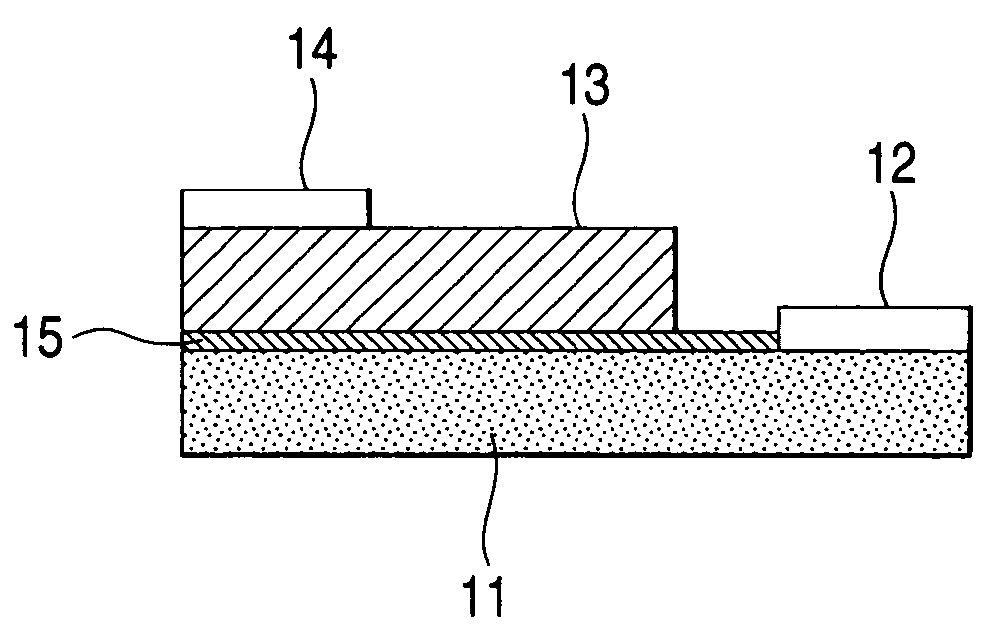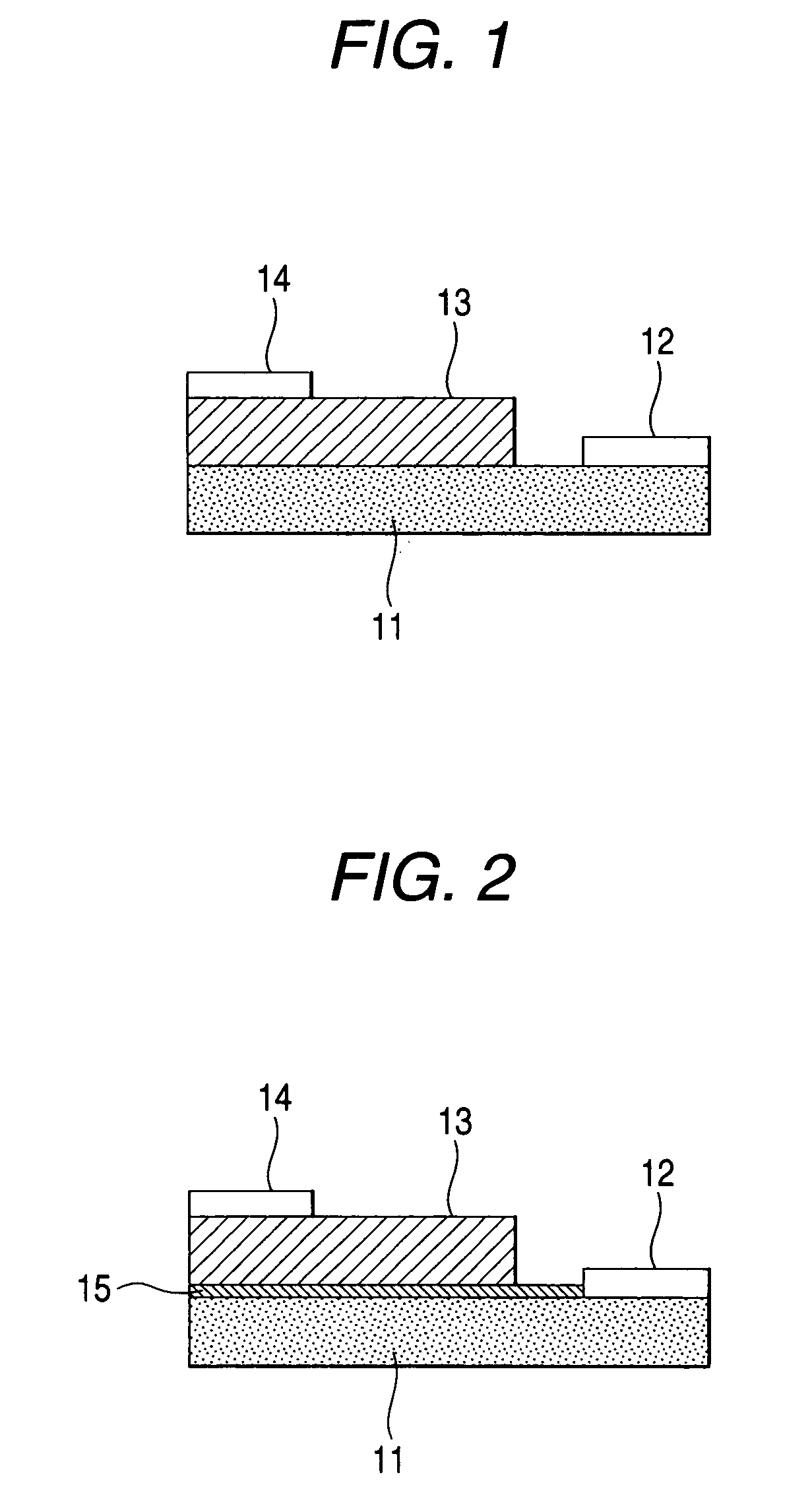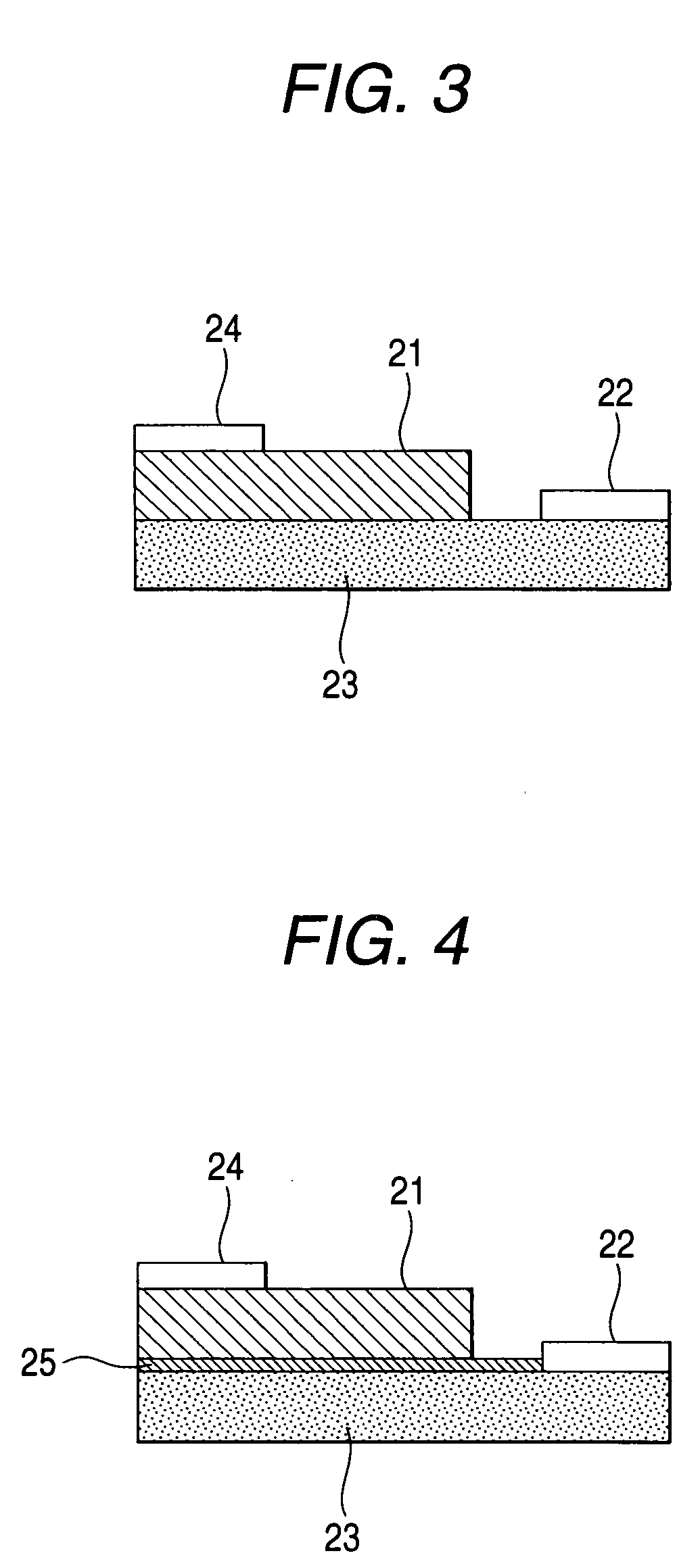Solar cell using carbon nanotubes and process for producing the same
a carbon nanotube and solar cell technology, applied in the field of solar cells, can solve the problems of inability to be environmentally thoughtful, process uses toxic raw material gases, and solar cell using organic semiconductors have not yet been put into practical application, and achieve the effect of high photoelectric conversion efficiency and easy production
- Summary
- Abstract
- Description
- Claims
- Application Information
AI Technical Summary
Benefits of technology
Problems solved by technology
Method used
Image
Examples
example 1
[0228] A solar cell of a pin junction having a constitution shown in FIG. 2 is produced by using a carbon nanotube structure as a p-type semiconductor substance.
Production of Carbon Nanotube Structure Film
[0229] A carbon nanotube structure film is produced in the following manner.
[0230] 30 mg of single wall carbon nanotube powder (purity: 90%, average diameter 1.1 nm, length: 0.5 to 100 μm, produced by Sigma Aldrich, Inc.) is added to 20 mL of concentrated nitric acid (60% by mass aqueous solution, produced by Kanto Kagaku Co., Ltd.), and the mixture is refluxed at 120° C. for 1.5 hours to synthesize carbon nanotube carboxylic acid.
[0231] The temperature of the solution is lowered to room temperature, and the solution is subjected to centrifugal separation at 5,000 rpm for 15 minutes to separate a precipitate from a supernatant fluid. The precipitate thus recovered is dispersed in 10 mL of pure water and then again subjected to centrifugal separation at 5,000 rpm for 15 minutes...
example 2
[0246] A solar cell of a pn junction having a constitution shown in FIG. 1 is produced by using a carbon nanotube structure as a p-type semiconductor substance.
[0247] On the same n-type silicon (n-Si) substrate (thickness: 625 μm, thermal oxidation film of 10 nm, 8 to 12 Ωcm, mirror finished, dimension: 10 mm×15 mm) as in Example 1, an electrode 12 (dimension: 5 mm square, 10 nm of titanium and 100 nm of gold) is formed in the same manner as in Example 1. In order to form a pn junction, the substrate is immersed in buffered hydrofluoric acid (HF: 20% by volume, NH4F: 21% by volume, H2O: 57% by volume) for 60 seconds to remove a thermal oxidation film on the surface of the n-type silicon substrate.
[0248] About 20 μL of a precursor coating composition containing SWNT each having a functional group, which is prepared in the same manner as in Example 1, is coated on the surface of the n-type silicon substrate having no thermal oxidation film to an area of 5 mm×10 mm and then heated to...
PUM
 Login to View More
Login to View More Abstract
Description
Claims
Application Information
 Login to View More
Login to View More - R&D
- Intellectual Property
- Life Sciences
- Materials
- Tech Scout
- Unparalleled Data Quality
- Higher Quality Content
- 60% Fewer Hallucinations
Browse by: Latest US Patents, China's latest patents, Technical Efficacy Thesaurus, Application Domain, Technology Topic, Popular Technical Reports.
© 2025 PatSnap. All rights reserved.Legal|Privacy policy|Modern Slavery Act Transparency Statement|Sitemap|About US| Contact US: help@patsnap.com



